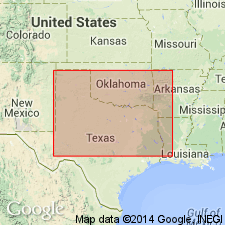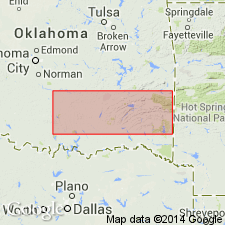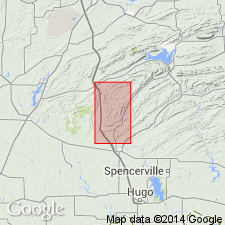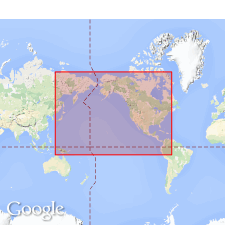
- Usage in publication:
-
- Bendian period
- Modifications:
-
- Revised
- AAPG geologic province:
-
- Bend arch
- Llano uplift
- South Oklahoma folded belt
Summary:
Pg. 1018-1049. Bendian period. On basis of paleontological and diastrophic evidence, term Bendian is proposed for new period to include that part of section between Chester group of Mississippian age and Des Moines series of Pennsylvanian age. Bendian period in Midcontinent is divided into Lower, Middle, and Upper Bendian. In Ardmore basin, Lower Bendian is represented by basal Springer formation, Middle Bendian by middle and upper Springer formation, and Upper Bendian by lower and middle Dornick Hills formation. These formations are correlated with Hot Springs sandstone, Stanley shale, Jackfork sandstone, and Johns Valley shale, the Bendian representatives in Ouachita Mountains. Carboniferous stratigraphy of Ouachita Mountains is made up of Mississippian part of Arkansas novaculite, Bendian Hot Springs sandstone, Stanley shale, Jackfork sandstone, Johns Valley shale, and Pennsylvanian Atoka formation.
Source: US geologic names lexicon (USGS Bull. 1200, p. 299).

- Usage in publication:
-
- Bendian period
- Modifications:
-
- Revised
- AAPG geologic province:
-
- Arkoma basin
- Ouachita folded belt
Summary:
Pg. 852-914. In Ouachita Mountains of Oklahoma and Arkansas, Bendian period subdivided into two series, Pushmataha (new) below and Morrow above. Overlies the Mississippian period and underlies the Pennsylvanian period. Carboniferous. Report includes correlation chart.
Source: US geologic names lexicon (USGS Bull. 1200, p. 299); supplemental information from GNU records (USGS DDS-6; Denver GNULEX).

- Usage in publication:
-
- Bendian period
- Modifications:
-
- Not used
Summary:
Pg. 130-139. Discussion of age classification of upper Pushmataha series in Ouachita Mountains. [Term Bendian period not used in this paper.]
Source: US geologic names lexicon (USGS Bull. 1200, p. 299).

- Usage in publication:
-
- Bendian Period
- Modifications:
-
- Overview
Summary:
Bendian Period. Original reference (Bend Series) credited to E.T. Dumble, 1890, Texas Geol. Survey, 1st Ann. Rept., pl. 3, p. lxv. Present in Midcontinent. Post-Chester to pre-Des Moines.
Source: US geologic names lexicon (USGS Bull. 1200, p. 299).
For more information, please contact Nancy Stamm, Geologic Names Committee Secretary.
Asterisk (*) indicates published by U.S. Geological Survey authors.
"No current usage" (†) implies that a name has been abandoned or has fallen into disuse. Former usage and, if known, replacement name given in parentheses ( ).
Slash (/) indicates name conflicts with nomenclatural guidelines (CSN, 1933; ACSN, 1961, 1970; NACSN, 1983, 2005, 2021). May be explained within brackets ([ ]).

